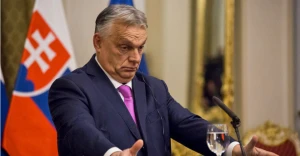
Ukrainian army's biggest successes in 2023: liberation of Black Sea, destruction of Russian aviation, elimination of traitors
Despite the lack of quick results of the counteroffensive in the south, the Ukrainian forces still achieved significant success in 2023. The biggest one is the ousting of the Russian Black Sea Fleet from the occupied Crimea and the resumption of maritime trade. But there were other achievements as well
Maritime Corridor 2.0 and SeaBaby drones: what the Black Sea Defense Forces achieved in 2023
The greatest achievement of the Ukrainian Defense Forces is undoubtedly the deprivation of the Russian Navy of its dominance in the Black Sea. Since the first days of the invasion, Putin has tried to use it to realize at least three goals:
- blockade of Ukrainian seaports, which before the full-scale invasion were Ukraine's trade gateway (at least two-thirds of the total foreign trade passed through them);
- blackmailing the world with hunger by preventing Ukrainian agricultural products from entering world markets;
- attacks on Ukraine with Kalibr sea-based missiles and terrorizing civilians.
These plans immediately ran into problems organized by the Ukrainian Armed Forces. The destruction of the flagship of the Russian Black Sea Fleet, the cruiser Moskva, and the liberation of Zmiinyi Island in the first year of the war were important stages in the battle for control of the Black Sea. And in July 2022, under pressure from the international community and Turkish President Recep Tayyip Erdogan, Putin was forced to agree to the operation of a "grain corridor" for the export of Ukrainian agricultural products.
However, a year later, on July 17, 2023, Russia announced the termination of the grain agreement. In response, President Volodymyr Zelenskyy announced his intention to continue exporting Ukrainian products by sea, but without Russia's consent. This seemed unrealistic to many. Moreover, after the termination of the "corridor," the Russian army launched massive missile and drone attacks on Ukrainian port infrastructure, including the Danube, as Russians regularly tried to hit the ports of Reni and Izmail. In the first three months after the suspension of the grain corridor, according to Deputy Prime Minister Oleksandr Kubrakov, the Russians organized 17 massive attacks that destroyed nearly 300,000 tons of grain and reduced the ports' export potential by 40%.
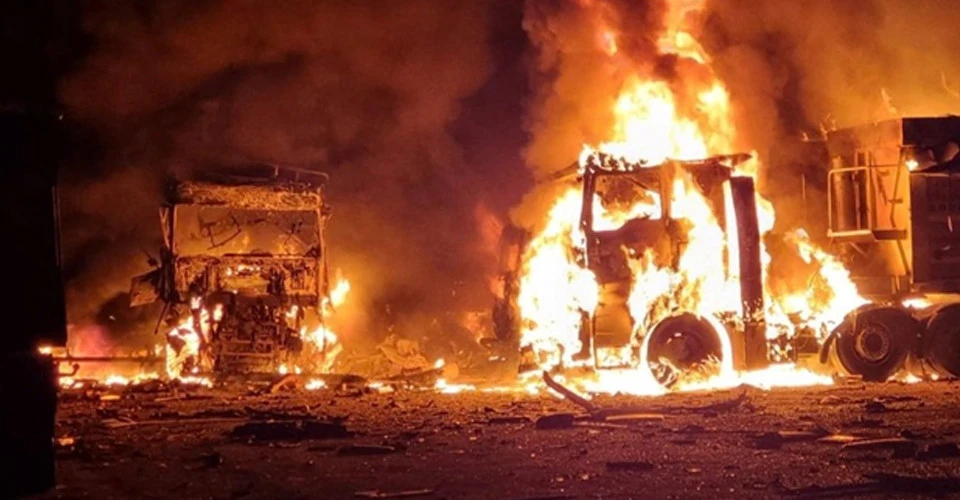
The aftermath of the attack on the ports of Reni and Izmail on the night of September 13, photo by Oleksandr Kubrakov
However, as Ukrainian air defense in the south was strengthened with the help of Western countries, these attacks became less and less effective. But to turn the tide in the Black Sea, Ukraine, which de facto has no navy of its own (at least in the classical sense of the word), needed to find an effective asymmetric response. What the Americans call a game changer is a means to dramatically change the situation. And Ukrainian maritime drones have become such a game changer.
The first confirmed attack involving them took place on October 29, 2022. The target was the ships of the Russian Black Sea Fleet in the bay of temporarily occupied Sevastopol. However, it was in 2023 that the Defense Forces managed to scale up these attacks. Let's mention just some of the most successful ones:
- On July 17, 2023, an explosion occurred on the illegally constructed Kerch Bridge, causing one span to collapse completely, and another to be damaged. Later, the head of the SBU, Vasyl Maliuk, said that it was his agency, together with the Ukrainian Navy, that organized the attack. The bridge was successfully attacked by SeaBaby drones, which carry a warhead of about 850 kilograms of explosives. The SBU later described these drones in detail to the American TV channel CNN, providing exclusive footage of the July attack.
- On August 4, the SBU conducted a successful special operation in the Novorossiysk Bay in the Krasnodar Krai. The large landing ship Olenegorsky Gornyak was damaged. The attack also involved the use of SeaBaby drones.
- The next night, near the Kerch Bridge, the Maliuk UAV attacked a Russian SIG tanker that was transporting fuel for the Russian troops.
- On September 14, drones hit the Russian patrol ships Vasily Bykov and Sergei Kotov.
- On October 13, several enemy ships were hit near Sevastopol: the patrol ship Pavel Derzhavin, the tugboat Professor Nikolai Muru, and the small missile ship Buyan-M.
- The attack was successful on the night of November 10, when two Russian small landing crafts, Project 1176 Akula and Project 11770 Serna, were destroyed in the bay near the village of Chornomorske in the occupied Crimea as a result of the Main Intelligence Directorate’s operation.
These attacks significantly changed the situation in the Black Sea. Russia was forced to withdraw its most capable ships from the occupied Crimea, including the frigates Admiral Makarov and Admiral Essen, three diesel submarines, five amphibious assault ships, and several small missile ships.
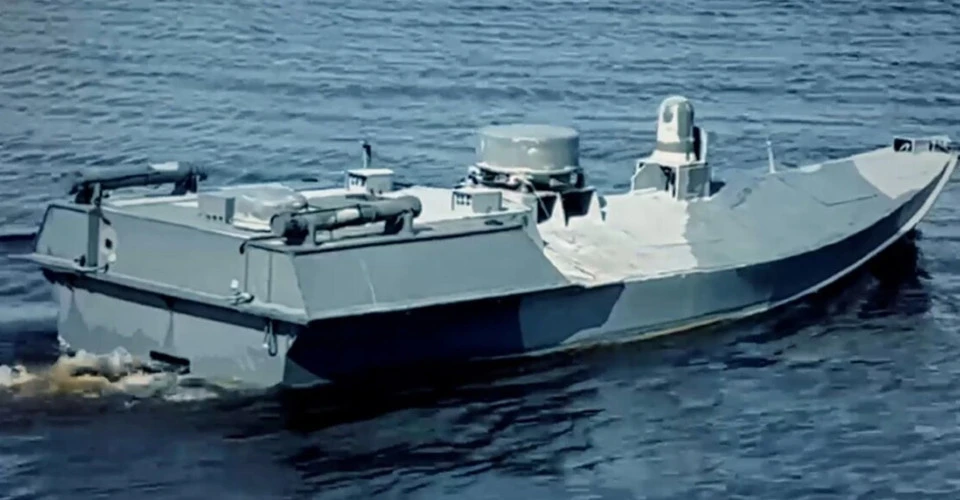
SeaBaby marine drone, SBU photo
"A technological development worth USD 250,000 allows us to defend ourselves against ships that cost USD 50 million or even USD 1 billion. Together, Ukrainians are creating a technological history," said Deputy Prime Minister for Digitalization Mykhailo Fedorov in the fall of 2022, announcing a collection for the world's first fleet of marine drones. Now we can confidently state that the investment has fully justified itself.
In parallel with drone attacks, the Defense Forces took other steps necessary to liberate the Black Sea from the Russian ships. One of them was the Ukrainian intelligence’s special operation to liberate the so-called Boyko’s Towers, gas and oil drilling platforms off the coast of Crimea that were seized by Russia in 2014 and used for military purposes since the beginning of the full-scale invasion. The operation took place in early September. According to intelligence representative Andriy Yusov, during the first stage, the military moored to the platform on a rubber boat despite the bad weather and inspected it. A few days later, the Defense Forces returned to the installations on more boats and took away enemy trophies: helicopter ammunition and the Neva radar, which can track the movement of ships in the Black Sea.

The Ukrainian Special Forces on Boyko's Towers, photo by the Defence Intelligence
A significant contribution to the disorganization of the Black Sea Fleet Command was also made by the Crab Trap operation, during which missile strikes were launched on September 22 against the Black Sea Fleet headquarters in Sevastopol. According to the head of the Main Intelligence Directorate, Kyrylo Budanov, several Russian generals were wounded in the attack, and at least 9 people were killed. And the Atesh guerrilla movement said that its members helped the Defense Forces coordinate the attack.

The headquarters of the Russian Black Sea Fleet after the strikes on September 22, 2023, photo from open sources
So, what are the results of all these operations? As of December 21, more than 300 vessels had used the temporary sea corridor to export Ukrainian products totaling 10 million tons. Agricultural exports have grown significantly, which is especially important amid the blockade of the land border with Poland. To emphasize: For the first time since February 24, Ukraine exported not only grain but also steel products by sea. The lungs of the Ukrainian economy have started breathing again. And this is extremely important both for filling the Ukrainian budget (this resource is used to finance the Defense Forces) and for the stability of the exchange rate.
And a nice "bonus". Since the end of September, Russia has not actually used sea-launched Kalibr missiles. They were not even present during the most massive air attack on December 29, when the Russian troops used almost all types of missiles available to them. And the problem here is not so much in production as in logistics, said Dmytro Pletenchuk, a spokesman for the Ukrainian Navy. The Russian fleet fled the occupied Crimea, but the entire infrastructure remained in Sevastopol. Ships cannot load Kalibrs in Novorossiysk. And returning to the "home harbor" for loading is too dangerous because you can meet a SeaBaby. But not only that.
On Christmas Day, the Ukrainian Air Force conducted a brilliant operation. A missile attack by Ukrainian tactical aviation completely destroyed the large landing ship Novocherkassk, which, judging by the large-scale detonation, could have been carrying another batch of Shaheds or other weapons.
Cardboard drones vs. strategic bombers: how the Ukrainian Defense Forces destroyed Russian aircraft
Russia’s total air superiority is one of its key advantages. Strategic bombers terrorize the civilian population, while tactical aviation does not allow the Ukrainian Armed Forces to take full advantage of Western armored vehicles on the battlefield. President Zelenskyy cited Russia's air superiority as one of the main reasons for the lack of results during the counteroffensive in the south.
Since the first days of the full-scale war, the Ukrainian Defense Forces have been methodically reducing Russia’s combat potential in the air. And 2023 was no exception. The Ukrainian forces conducted several brilliant operations that resulted in painful losses for the Russians. Let us recall only the key ones.
On May 13, the first large-scale "plane crash" of the year took place in Russia. In the city of Klintsy, Bryansk region, a military Mi-8 helicopter crashed into a private building. A little later, Russian Telegram channels reported the crash of two bombers, Su-34 and Su-35. In total, five aircraft "took off negatively" that day. None of the crews survived. All the aircraft belonged to the same air group. They were flying on a combat mission and were supposed to attack the Chernihiv region with guided aerial bombs. Only a few weeks later, the Ukrainian Air Force disclosed the details of the operation. The ships were destroyed in minutes by units of the Patriot anti-aircraft missile system, which had been "pulled up" to the border. "It was a brilliant operation led by the Air Force Commander... I jokingly call it the Bryansk Massacre," Yuriy Ihnat, spokesman for the Air Force Command, told Novynarnia. This forced the Russian army to minimize air activity on the border with Ukraine in the Chernihiv region.
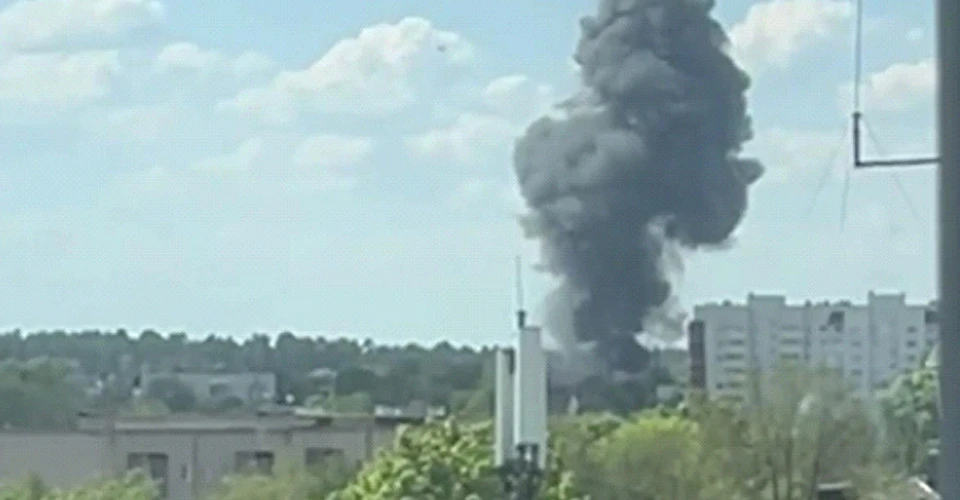
The aftermath of the helicopter crash in Klintsy, Bryansk region, Russia, screenshot
On the night of August 30, Ukrainian drones attacked a military airfield in Pskov. As a result of the attack, four Russian Il-76 aircraft were destroyed, and two more could have been damaged, the Defense Ministry's Main Intelligence Directorate said. The airport is located 700 kilometers from the border with Ukraine, and observers did not rule out the possibility that the drones could have been launched from Russian territory. The Il-76 is a military transport aircraft used to quickly deploy personnel to combat zones. A well-known airborne division is based in Pskov, and its soldiers have been fighting against Ukraine since 2014.
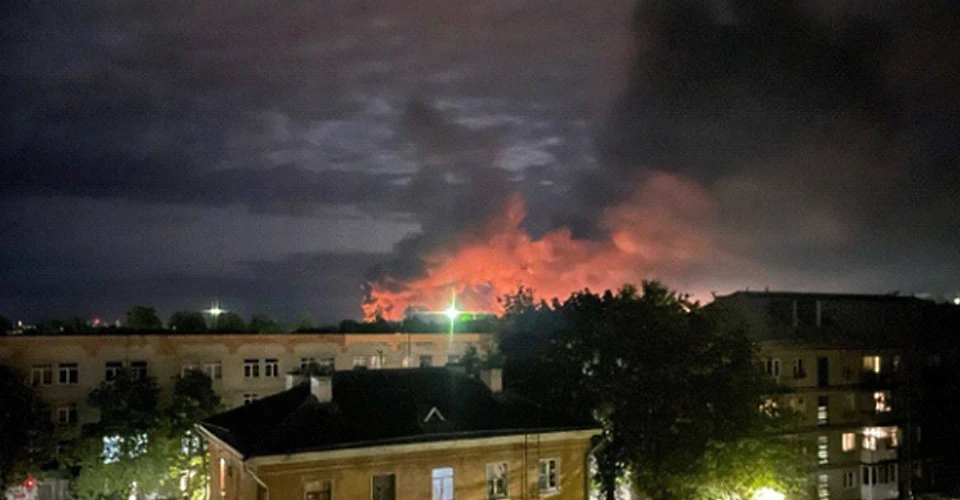
Fire at the Kresty military airfield in Pskov, photos from social networks
Already on August 31, the editor-in-chief of Censor.net reported an SBU attack on a military airfield in Kursk. According to him, the Ukrainian intelligence service used cardboard drones that could not be detected by Russian air defense. As a result of the attack, the Russians lost 4 Su-30 and one MiG-29 aircraft. Among the targets destroyed were S-300 radars and two Pantsirs.
On the night of September 20, the SBU and the Ukrainian Navy organized a large-scale attack on the Saki military airfield in occupied Crimea. According to media reports, at least 12 combat aircraft (Su-24 and Su-30) and a Pantsir anti-aircraft missile system were concentrated there. To overload Russian air defense, the Defense Forces used drones and then launched Neptune missiles. The enemy's exact losses are not known for certain, but Russian Telegram channels confirmed the strike and the high losses, including among personnel.
On the night of October 17, the Ukrainian Armed Forces launched another attack on the Russian Air Force. This time, the targets were the military airfields of the temporarily occupied Luhansk and Berdyansk. For the first time, the strikes were carried out with long-range ATACMS missiles. According to the Special Operations Forces, Russia suffered heavy losses as a result of the strike, including 9 helicopters and special equipment located at the airfields. The spokesman for the Ukrainian Air Force Command, Yuriy Ihnat, did not want to comment on what exactly was used in the strike, but noted: "The defeat of such equipment as the Russian helicopters, which he uses - Ka-52, Mi-24 - is certainly good for us. Because helicopters, along with tactical aircraft, are constantly working at the front and on the front line.”
Finally, the Ukrainian Armed Forces made their last "gift" to the Russian army on Christmas Eve. On December 22, the Ukrainian Air Force Commander Mykola Oleshchuk announced the destruction of three Russian Su-34 bombers in the southern direction (according to media reports, these were the planes that bombed the Ukrainian bridgehead on the left bank of the Kherson region near the village of Krynky). As noted by observers of the Defense Express information and consulting group, the simultaneous destruction of so many planes was in fact a repetition of the extremely successful operation to destroy Russian aircraft in the Bryansk region. It is not known whether Ukrainian defenders used Patriot SAMs this time. And on December 24, the Air Defense Forces destroyed two more fighters - a Su-34 in Donetsk region and a Su-30SM over the Black Sea. That's five fighters within a week.
All of these are very painful losses for the Russian army, both in terms of equipment and pilots, whose training requires a lot of time and resources.
Tatarsky, Kyva, Prilepin, and a nervous Simonyan: How traitors and war-mongers were eliminated
"We will defeat everyone, we will kill everyone, we will rob everyone we need, everything will be as we like it" - this phrase full of hatred and cynicism belongs to Vladlen Tatarsky (real name: Maxim Fomin), a so-called military commander from Makiivka. He voiced it at Putin's speech announcing the illegal annexation of Donbas, Zaporizhzhia, and Kherson. However, the criminal's ambitious plans did not work out: On April 2, 2023, during Tatarsky's "recital" in a cafe in the center of St. Petersburg, an explosion occurred, killing the "military commander" and injuring fifteen other guests. The explosives were placed in a statuette given to Tatarsky by a resident of the city, Daria Trepova. She claimed that she was "framed." Ukrainian officials traditionally distanced themselves from the incident. "It's starting to happen in Russia... Spiders are eating each other in a jar. The question of when domestic terrorism would become an instrument of internal political struggle in a country of tightened nuts was a matter of time, like the breakthrough of a ripe abscess," Mykhailo Podolyak, an adviser to the head of the Office of the President of Ukraine, wrote on his page on the X network (formerly known as Twitter). However, on October 23, the American edition of The Washington Post published an article in which, citing sources in the CIA, it was claimed that the elimination of Tatarsky (as well as Daria Dugina in 2022) was a special operation of the Ukrainian special services. According to the newspaper, both operations involved elite groups of Ukrainian operatives formed, trained and equipped in close partnership with the CIA. US intelligence officials told the newspaper that they are observing the emergence of a "Ukrainian Mossad" in Ukraine, ready to punish traitors and enemies of the country abroad.
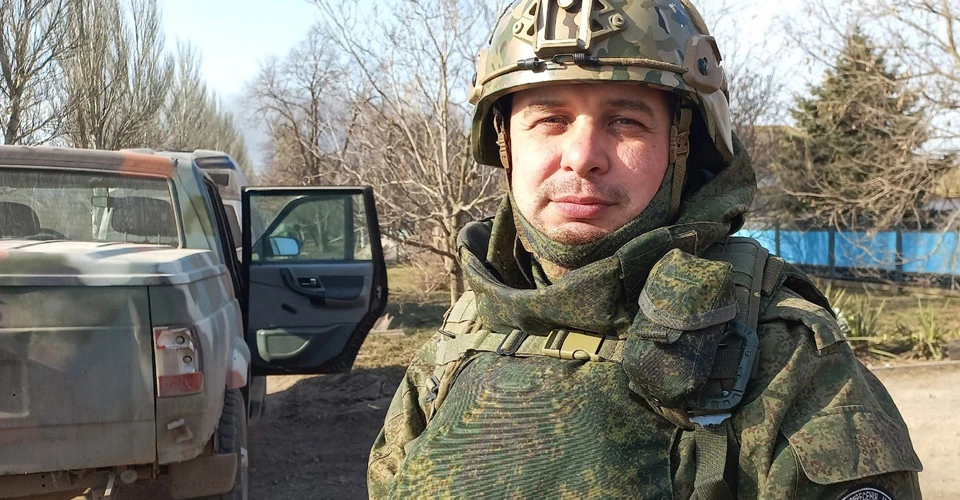
Vladlen Tatarsky (Maksym Fomin), photo from cyclowiki
Tatarsky is not the only victim of the war. On May 6, unknown persons blew up a car carrying Russian propagandist and militant Zakhar Prilepin. This happened in the Nizhny Novgorod region of the Russian Federation, where Prilepin has a summer residence. It is known that the explosion killed the driver and personal bodyguard of the propagandist, who also turned out to be a former LPR militant. Prilepin himself was seriously injured and spent several months in the hospital. The Atesh guerrilla group claimed responsibility for the assassination attempt. Prilepin calls himself a "Russian writer" but became known to the general public through his political and media activities. In particular, he supported the occupation of Crimea in 2014, and later joined the ranks of the so-called DPR militants and allegedly participated in hostilities. In January 2022, Prilepin signed a contract with the Russian Guard and went to war against Ukraine for the second time.
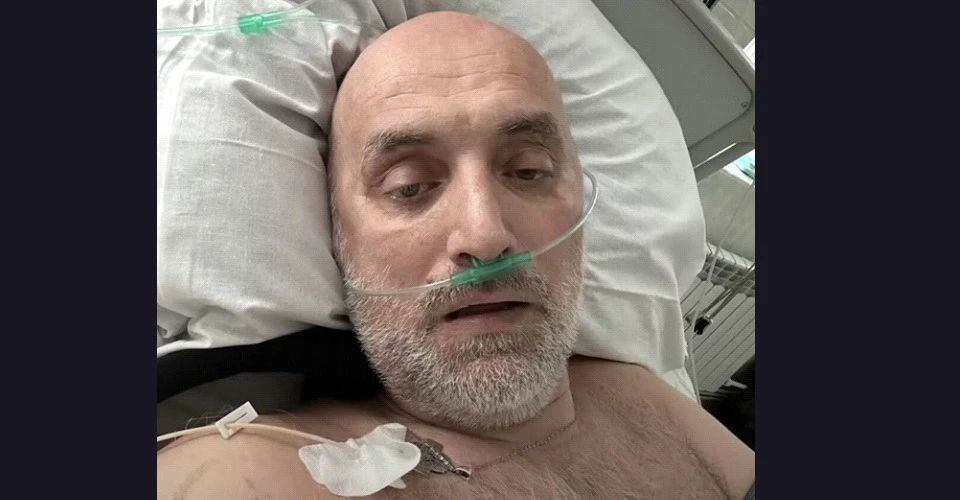
Militant Zakhar Prilepin in the hospital after a car explosion, photo from the resources of the aggressor country
On the morning of November 8, the car of the so-called LPR deputy Mikhail Filiponenko exploded in the temporarily occupied Luhansk, killing him. The Main Intelligence Directorate claimed responsibility for the militant's death. According to its data, Filiponenko was involved in organizing torture chambers in the occupied territories of Luhansk region, where both prisoners of war and civilian hostages were tortured. At the same time, Filiponenko himself personally tortured people.
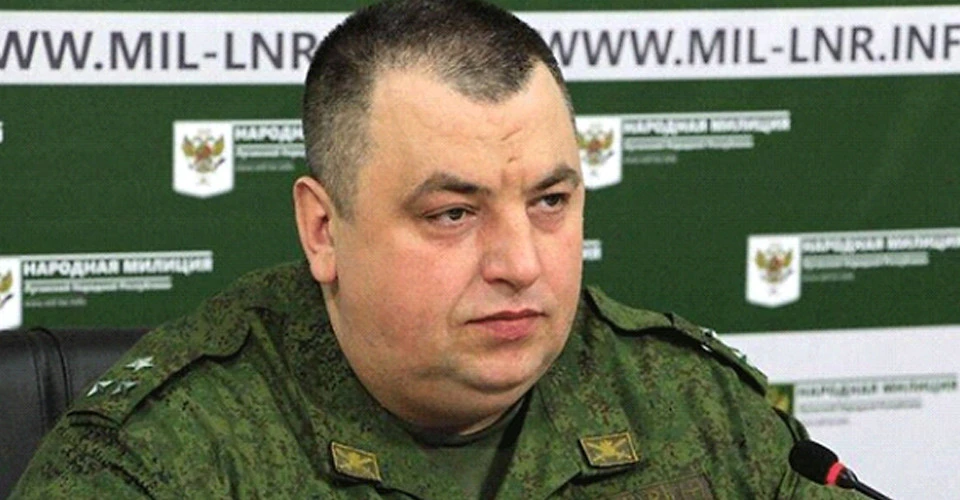
War criminal Mikhail Filiponenko, photo from the resources of the aggressor country
At the end of the year, Ukrainian special services carried out another high-profile liquidation. On December 6, traitor and former MP Ilia Kyva was shot dead in the Moscow region. A man of colorful biography, Kyva eventually found himself in parliament for Putin's friend Viktor Medvedchuk's pro-Russian party, Opposition Platform for Life. On the eve of the full-scale invasion, he traveled to Russia, where he participated in various propaganda talk shows and supported the war against Ukraine. According to Ukrainian media, the SBU was involved in the traitor's elimination. Intelligence representative Andriy Yusov commented on Kyva's death on the air of the United News telethon: "Such a fate will befall other traitors to Ukraine, as well as henchmen of the Putin regime.”

Liquidated state traitor Ilia Kyva, photo obtained by Ukrainian media from SBU sources
It was not only Ukrainian intelligence services and partisans that kept Russian propagandists and their Ukrainian minions busy. In 2023, Ukrainian drones began to regularly "visit" Russian cities, including at least 15 times to Moscow. On the night of May 3, two drones even reached the Kremlin. The moment of the attack was captured on video. Putin's spokesman, Dmitry Peskov, said that Moscow considers the attack as "a planned terrorist action and an attempt on the life of the President of the Russian Federation." Ukraine strongly distanced itself from any involvement in the incident.
The statements of Russian propagandist Margarita Simonyan, who complained three times that Ukrainian drones allegedly wanted to hit her home, in different parts of Russia, were anecdotal. At the end of August, they allegedly attacked her house in the Moscow region, and in October, they attacked a house near Sochi. The propagandist explained the inability of Russian air defense to shoot down UAVs approaching her numerous properties on a propaganda talk show in a manner typical of her: "I asked the military this question. They say that air defense systems are not designed to detect and catch these little things, because then they will shoot at birds.”
Systematic work against propagandists and traitors is not just a matter of symbolic steps and justice. This is a clear signal to all those involved in fomenting war: sooner or later, they will be held accountable and no one will be able to protect them.
What about the battlefield?
Ukraine's announced counteroffensive has not yielded quick results, and this is recognized by Ukraine's military and political leadership. In a recent article, The New York Times wrote that the Russians have seized the initiative on many fronts. The situation is dire, and it largely shapes the gloomy outlook for the entire 2023 campaign. Especially amid the inflated expectations after the obvious territorial gains in the fall of 2022.
However, there are also relatively positive views of the year's results. For example, in an interview with Ukrinform, Roman Kostenko, a colonel of the Ukrainian Security Service and secretary of the Verkhovna Rada Committee on National Security, Defense and Intelligence, said that he generally considers 2023 to be a successful year in terms of the military campaign.
"Of course, compared to the results that everyone expected, this year can be called unsuccessful because we did not reach the Sea of Azov... However, in my opinion, 2023 was successful in terms of the military campaign. We did not lose any new territories, fighting against an army that is several times larger than us in terms of resources. We destroyed several hundred thousand Russian soldiers, several thousand tanks, a lot of artillery, and ammunition depots," the MP said.
Retired Lieutenant General Ben Hodges, the former commander of US forces in Europe, has similar thoughts. In his Silicon Curtain podcast, he admits that the Ukrainian counteroffensive did not bring the expected results, but blames it primarily on the West, which did not provide the Ukrainian army with the necessary means. At the same time, Hodges emphasizes the poor results of the Russian army, despite its resources, which are many times greater than Ukraine's.
"Russia has been trying to conquer Ukraine since 2014, but with all its capabilities, it has achieved control over only 17% of the territory, while losing more than 300,000 people, a significant portion of its weapons, and fleet supremacy in the Black Sea," the American military emphasizes.
Assessments of the campaign sometimes resemble arguments about whether the glass is half full or half empty. After all, as British Prime Minister Winston Churchill said: "Success is not final, failure is not fatal, only the courage to continue matters.”
- News






